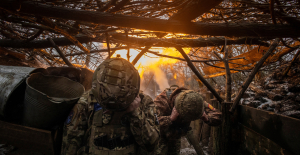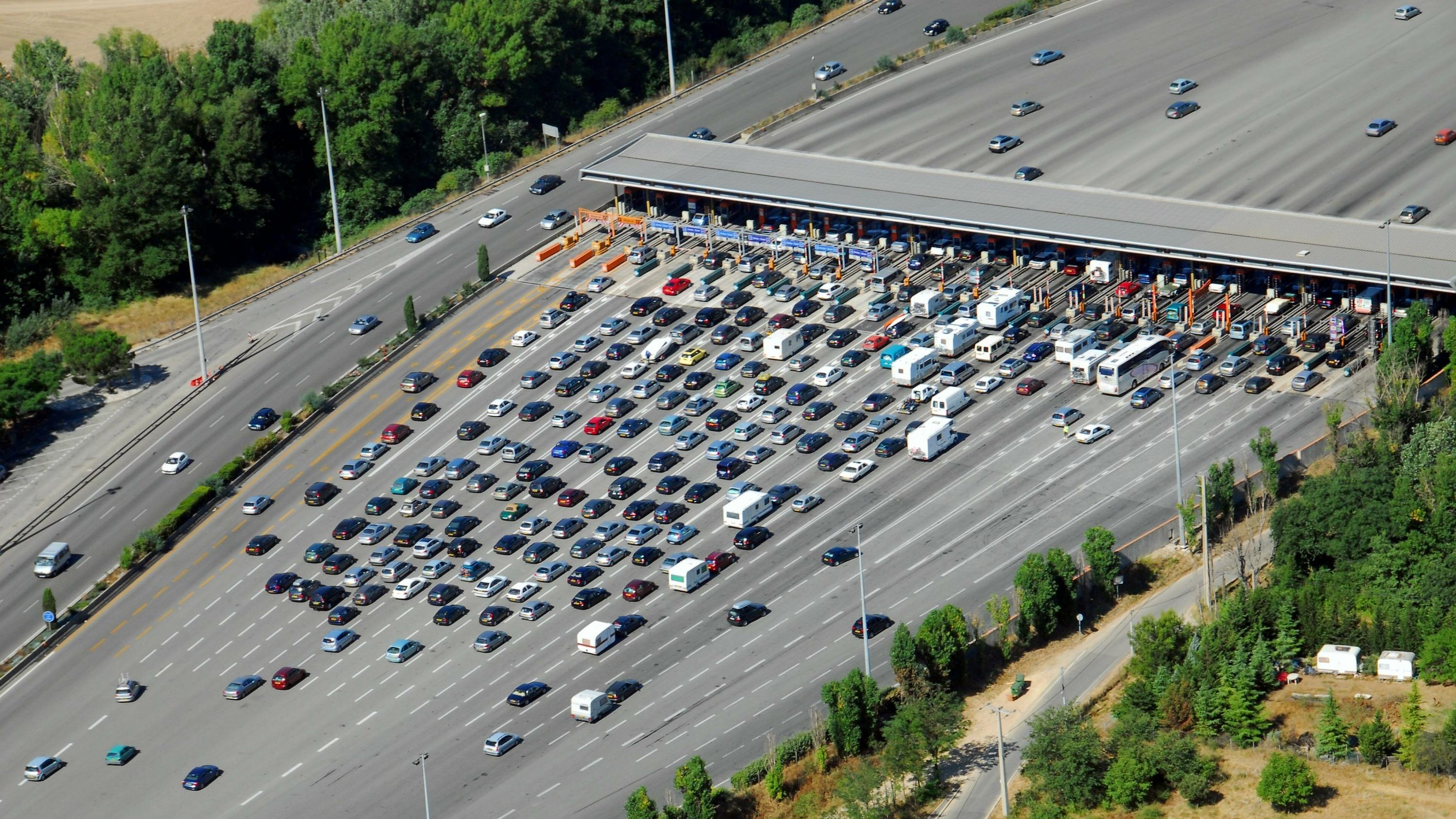Canada is known for its breathtaking landscapes, its lakes, forests, parks, animals, or its remarkable and distinct seasons. In this country which is 20 times the size of mainland France, nature reigns supreme. But the Canadian postcard catches fire.
“Global warming has made extreme weather conditions behind the raging fire season in eastern Canada this year at least seven times more likely,” according to a study published Tuesday, August 22 by the World Weather Attribution (WWA). international scientific network.
In just a few years, climate disasters have exposed the country's vulnerabilities to global warming. Canada has gained 1.7°C since the 1950s. In the North, the average annual temperature has even increased by 2.3°C. According to Environment Canada's 2019 report, the world's second largest country is warming twice as fast as the global average.
As explained to Le Figaro Yan Boulanger, co-author of the WWA study published on Tuesday and scientific researcher in forest ecology at Natural Resources Canada, Canada is a Nordic country, affected by Arctic amplification. This is a phenomenon that means that the further we go towards northern latitudes, the greater the warming. This amplification is mainly caused by melting ice — a process that is increasing in the Arctic by 13% per decade.
Since the ice is melting, the sun no longer reflects on it. Its rays therefore directly warm the air and the oceans. The hotter it is, the more the ice melts and the more the ice melts, the hotter it will be.
In its 2021 report, the IPCC announces that temperatures in northern regions of Canada could therefore increase very significantly compared to the global average, particularly in winter. The Expert Panel predicts an increase in snowfall in January and February accompanied by less extreme cold weather. Conversely, summers are expected to be hot. Heat waves will become more intense and frequent and a sharp increase in summer forest fires is expected. This year 2023 is a good illustration of this.
More than 15 million hectares have already burned this year, an absolute record. According to the Department of Natural Resources Canada, this is more than 10 times greater than the average area burned per decade. Among other reasons, the country started burning early, in May. “Global warming is making the climatic fire season longer; it starts earlier in the spring and ends later in the fall,” laments the AAW scientist.
The very hot and dry conditions in Canada made the fuels very flammable. But the forests in the north of the country, the boreal forests, are also particularly sensitive to fires. Mainly made up of conifers (pines, firs, etc.), they burn more easily than hardwood species (maples, oaks, etc.).
These repeated fires plunge Canada into a vicious circle. When they burn, plants release all the carbon dioxide accumulated over the years. And the burnt boreal forests, very old, were heavily loaded with CO2. In total, this year's fires have released the equivalent of more than a billion tonnes of CO2. But this released CO2 will not be able, or very little, to be absorbed by the new forests which will grow back, because they will take time before being able to support it. In short, the more the territory burns, the more it becomes younger. And the more it burns, the more CO2 it emits and the less it can absorb.
Yan Boulanger recalls that “fire is a major natural disturbance in Canada; ecosystems are adapted to it”. But up to a point, because the country could well face regeneration accidents. After the passage of the fire, certain species of plants can regenerate relatively easily, “the problem is that when the fires become too frequent, we exceed the resilience of the boreal forest”.
Not only is the country burning, but Canada's warming involves many other weather phenomena. The 2021 heat dome in British Columbia remains in the memory. It killed at least 130 people and Canada recorded a new all-time heat record that year, at 49.5°C.
Flooding is also very common at the end of winter; exceptionally high temperatures cause snow and ice to melt faster. The water flow rates then become too high. At the beginning of May 2023, the excess of 10 ° C in places above the normal for the season, triggered floods in the West and forced the evacuation of homes in Alberta.
Less cold winters sometimes also mean earlier snowmelt. A certain humidity then sets in and the return of the rains. But winter is not always over; a sudden return of cold can freeze this humidity and create an ice storm. That of last April, especially in Montreal, caused a lot of damage and killed 3 people. Hundreds of thousands of homes were without power for several days.
Yan Boulanger asserts that since the 1950s, extreme weather phenomena have multiplied and intensified and that "the country and the communities will have to learn to adapt and live with the very changing climate".
According to him, this suggests making arrangements so that the risk of fire around cities and infrastructure is limited. “The fuels around the communities should be reduced or changed; change the vegetation so that it is less flammable”. Better detection and quantification of the risks of forest fires is also a major challenge. In 2029, the "fireguard mission" will be operated: a satellite will be sent to detect fires more quickly in Canada.
These climatic upheavals will have real repercussions on the country's economy. Some sectors will have to adapt, such as the forestry industry or agriculture, which are very affected.

 What is chloropicrin, the chemical agent that Washington accuses Moscow of using in Ukraine?
What is chloropicrin, the chemical agent that Washington accuses Moscow of using in Ukraine? Poland, big winner of European enlargement
Poland, big winner of European enlargement In Israel, step-by-step negotiations for a ceasefire in the Gaza Strip
In Israel, step-by-step negotiations for a ceasefire in the Gaza Strip BBVA ADRs fall almost 2% on Wall Street
BBVA ADRs fall almost 2% on Wall Street Breast cancer: less than one in two French women follow screening recommendations
Breast cancer: less than one in two French women follow screening recommendations “Dazzling” symptoms, 5,000 deaths per year, non-existent vaccine... What is Lassa fever, a case of which has been identified in Île-de-France?
“Dazzling” symptoms, 5,000 deaths per year, non-existent vaccine... What is Lassa fever, a case of which has been identified in Île-de-France? Sánchez cancels his agenda and considers resigning: "I need to stop and reflect"
Sánchez cancels his agenda and considers resigning: "I need to stop and reflect" The Federal Committee of the PSOE interrupts the event to take to the streets with the militants
The Federal Committee of the PSOE interrupts the event to take to the streets with the militants Volvic factory shut down after “an act of malicious intent”: production can resume “at the earliest” on Friday
Volvic factory shut down after “an act of malicious intent”: production can resume “at the earliest” on Friday SNCF: algorithmic video surveillance in stations attacked before the CNIL
SNCF: algorithmic video surveillance in stations attacked before the CNIL Europeans: Macron's speech at the Sorbonne counted as speaking time on the Renaissance list
Europeans: Macron's speech at the Sorbonne counted as speaking time on the Renaissance list The government wants to strengthen its controls on cryptocurrency holders
The government wants to strengthen its controls on cryptocurrency holders Jean Reno publishes his first novel Emma on May 16
Jean Reno publishes his first novel Emma on May 16 Cannes Film Festival: Meryl Streep awarded an honorary Palme d’Or
Cannes Film Festival: Meryl Streep awarded an honorary Palme d’Or With A Little Something Extra, Artus and his disabled actors do better than Intouchable on the first day
With A Little Something Extra, Artus and his disabled actors do better than Intouchable on the first day Madonna ends her world tour with a giant - and free - concert in Copacabana
Madonna ends her world tour with a giant - and free - concert in Copacabana Omoda 7, another Chinese car that could be manufactured in Spain
Omoda 7, another Chinese car that could be manufactured in Spain BYD chooses CA Auto Bank as financial partner in Spain
BYD chooses CA Auto Bank as financial partner in Spain Tesla and Baidu sign key agreement to boost development of autonomous driving
Tesla and Baidu sign key agreement to boost development of autonomous driving Skoda Kodiaq 2024: a 'beast' plug-in hybrid SUV
Skoda Kodiaq 2024: a 'beast' plug-in hybrid SUV The home mortgage firm rises 3.8% in February and the average interest moderates to 3.33%
The home mortgage firm rises 3.8% in February and the average interest moderates to 3.33% This is how housing prices have changed in Spain in the last decade
This is how housing prices have changed in Spain in the last decade The home mortgage firm drops 10% in January and interest soars to 3.46%
The home mortgage firm drops 10% in January and interest soars to 3.46% The jewel of the Rocío de Nagüeles urbanization: a dream villa in Marbella
The jewel of the Rocío de Nagüeles urbanization: a dream villa in Marbella Europeans: a senior official on the National Rally list
Europeans: a senior official on the National Rally list Blockade of Sciences Po: the right denounces a “drift”, the government charges the rebels
Blockade of Sciences Po: the right denounces a “drift”, the government charges the rebels Even on a mission for NATO, the Charles-de-Gaulle remains under French control, Lecornu responds to Mélenchon
Even on a mission for NATO, the Charles-de-Gaulle remains under French control, Lecornu responds to Mélenchon “Deadly Europe”, “economic decline”, immigration… What to remember from Emmanuel Macron’s speech at the Sorbonne
“Deadly Europe”, “economic decline”, immigration… What to remember from Emmanuel Macron’s speech at the Sorbonne These French cities that will boycott the World Cup in Qatar
These French cities that will boycott the World Cup in Qatar OM-Atalanta: the lines of the match
OM-Atalanta: the lines of the match Ligue 1: Lorient supporters invade the training center
Ligue 1: Lorient supporters invade the training center Hand: Montpellier overthrown by Kiel in the Champions League
Hand: Montpellier overthrown by Kiel in the Champions League Tennis: Medvedev gives up, Lehecka in semi-finals
Tennis: Medvedev gives up, Lehecka in semi-finals


















